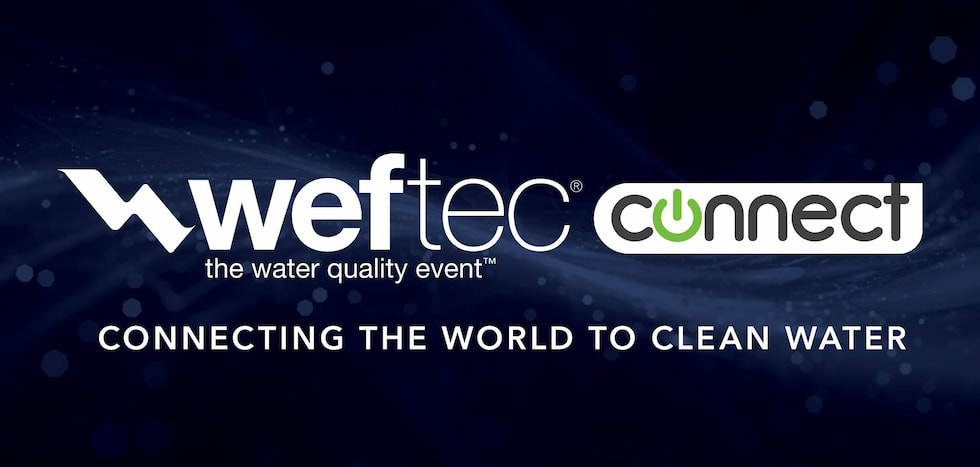
Here are the important takeaways from sessions attended by the Pumps & Systems' editors at WEFTEC Connect Day 1.
Leading With Courage
WEFTEC Connect kicked off with something we’ve all needed a little more this year: courage. In the opening general session “Clarity Through Crisis,” viewers listened to keynote speaker René Rodriguez, CEO of Volentum, speak on the importance of leading during times of adversity as he walked attendees through the Courage Scale (available at couragescale.com).

In this session, Rodriguez said individuals and companies will be defined on how they have and continue to respond to the trials of 2020. Rodriguez said employees will ask themselves, “Did I make a mistake working for this leader?” He walked viewers through the four main regions of the brain as described in the Triune model—the reptilian brain, the limbic system, the neocortex and the prefrontal cortex—and how they play into the decision-making process. Rodriguez also said that “no raindrop ever felt responsible for the flood,” and explained that no matter our intentions, our actions will have an impact on the outcome for our companies, our customers and ourselves.
Training the Next Generation of W/WW Workers
“We want to make water a career of choice,” Andrew Wheeler, administrator of the United States Environmental Protection Agency (EPA) said today during his WEFTEC Connect keynote address. Wheeler took time to thank the service of water workers across the U.S., stating that “every drop of water is available only through the dedication of the hundreds of thousands of skilled workers.” Acknowledging that one-third of the water and wastewater workforce is expected to retire in the next decade, Wheeler outlined the recently announced Water Workforce Initiative created to help cities and communities across the country that are facing critical staffing shortages for the operation and maintenance of essential drinking water and wastewater infrastructure. The federal activities for the initiative will center around recruiting, training for the skills of tomorrow, collaborating to build a workforce that meets the needs of the future, and engagement in public outreach. Learn more about this initiative.
Goal: Reduce Drinking Water Health Violations by 25%
Several representatives from the EPA spoke during "The Future of Water Policy: The National Perspective" presentation, including Jennifer Martin, Deborah Nagle, John Goodin, Andrew Sawyers and roundtable host Charlie Stevens of the City of Kansas City, Missouri.
According to Nagle, the EPA is collaborating with the U.S. Department of Defense to develop a method for detecting 28 specific Perfluoroalkyl substances (PFAS) analytes in wastewater. Single lab validation is happening now, and the EPA expects that effort to be completed by December 2020 and the method to be completed in 2022.
The EPA continues to examine info about surface water discharges to identify sources that may warrant further study for potential regulation. It is focused on four industrial categories: airports, mechanical manufacturers, paper and paper board manufacturers, and textile board manufacturers.
According to Goodin, some nonregulatory efforts to protect water include reducing excess nutrients in water waste — a primary pollutant. This remains a key challenge and a core focus. Section 319 of the Clean Water Act has a program that provides funding to address nutrient impairments. Partners are seeing success, and water quality results are being enhanced on the ground
McClain said that soon the EPA will release a survey to assess the economic and operational challenges that utilities have faced during the pandemic.
Another challenge is to reduce the number of drinking water systems that have health-based violations, and the goal to reduce violations by 25 percent. To meet this goal, a variety of collaborations and activities are planned along with providing water systems with technical support through funding and financing programs. There are also some source water protection activities and source water assessments. Developing tools such as drinking water mapping applications for source water that helps identify where watersheds critical to drinking water may be impaired.
'We Have an Obligation to do Better,' Says Henrik Nielsen of Denmark's VandCenter Syd
Henrik Nielsen, project director at VandCenter Syd (VCS) in Denmark, presented “A Utility’s Journey in the Development and Implementation of Innovation Program in Alignment with U.N. Sustainable Development Goals (SDGs)” at WEFTEC Connect. VCS has achieved the admirable goal of becoming an energy neutral plant in 2014 and an energy neutral utility in 2019. According to Nielsen, the goals of the United Nations (U.N.) have enabled VCS justification for allocating resources to innovation. Nielsen explained how this inspires his work: “We like to think that we have an obligation to do better, and the U.N. sustainability goals clearly indicates that it is not enough to be good, you have to be better all the time.”
Some of the ongoing innovation that VCS is involved in includes ammonia-based aeration control for biological nutrient removal (BNR), an N2O probe used to measure emissions in wastewater treatment plants, pyrolysis of sludge to capture the carbon in biosolids, robotic surveillance of sewers, and using Internet of Things (IoT) meters to collect more data that would eventually help them to reach new milestones in sustainability.
Nielsen ended on a hopeful and activating note, saying “We can do more than we do today, and therefore I think that we have an obligation to do so.” When it comes to optimizing plant processes and lessening the negative impact of the water and wastewater industries on the environment, Nielsen reminds everyone that “we can do better.”

